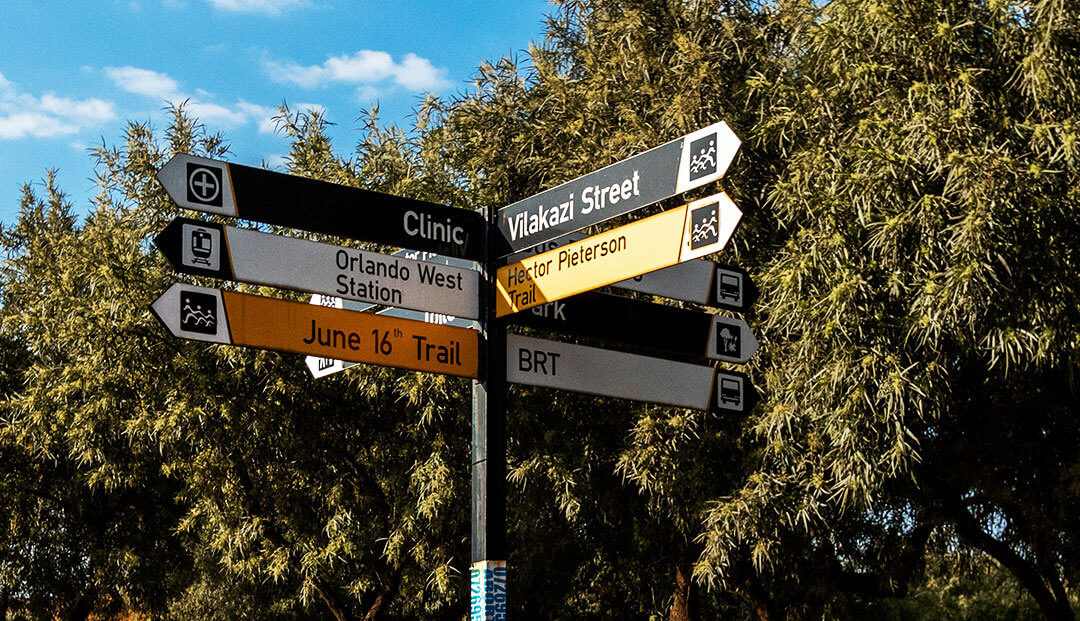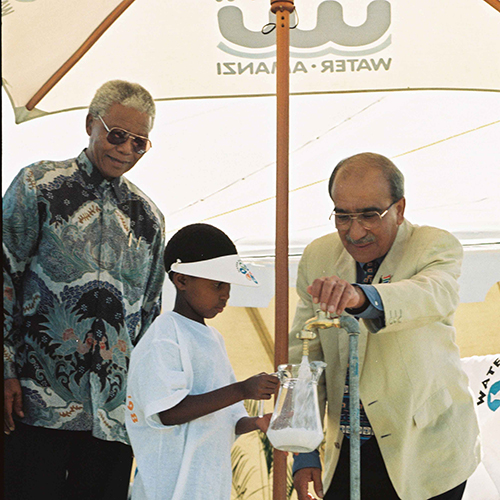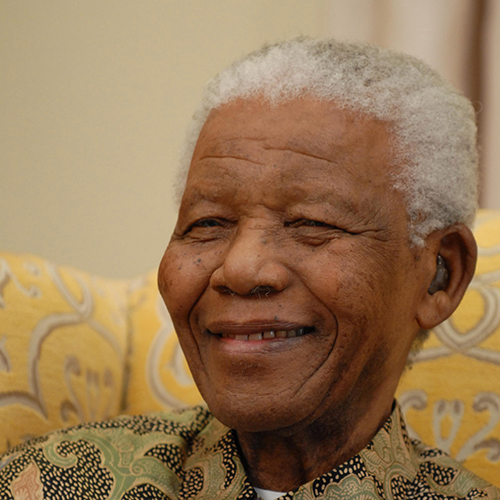First published: June 2018. Updated 01 June 2021.
On June 16 each year, South Africans celebrate Youth Day. Youth Day commemorates the Soweto Uprising, which took place on 16 June 1976, where thousands of students were ambushed by the apartheid regime.
On Youth Day, South Africans pay tribute to the lives of these students and recognises the role of the youth in the liberation of South Africa from the apartheid regime.
The Bantu Education Act and the Soweto Uprising
Let’s rewind a little further to January of 1954, when the Bantu Education Act came into effect, making it compulsory for black children to attend government schools and learn specific subjects in English and Afrikaans. Prior to this, most black children only had access to schools run by missions that were understaffed and poorly attended.
The Bantu Education system wasn’t much better. It featured separate Black schools and universities, poor facilities, overcrowded classrooms and inadequately trained teachers, resulting in a lack of quality education for black children. The Bantu Education Policy was designed to ‘train’ Africans for their role in the new apartheid society. This African role was one of the worker, labourer and servant only.
In January of 1976, the government mandated that all school subjects be taught in Afrikaans. The Afrikaner-dominated government recognised only English and Afrikaans as official languages, and all indigenous languages were banned.
The decision caused an uproar amongst parents, teachers and students, so on the morning of June 16 1976, 16-year-old Antoinette Sithole and an estimated 20,000 students from Soweto and the surrounding secondary and high schools, planned to peacefully protest Afrikaans as the primary teaching language in schools.
If you want a well-rounded picture of what happened during the Soweto Uprising, why not take a half-day Soweto tour?
The protest was planned by the Soweto Students Representative (SSRC), with support from the wider Black Consciousness Movement. Teachers and parents joined the march after the SSRC emphasised peaceful action. Little did they know this student protest would go on to become one of the most tragic, yet pivotal, protests in all of South Africa’s history.
The students began the march to Orlando Stadium, only to find out that police had barricaded the road along their intended route. The leader of the SSRC asked the crowd not to provoke the police, and the march continued on another route. The students sang and waved placards with slogans such as, “Down with Afrikaans” and “Viva Azania“.
The police responded to the protest by firing teargas and later live ammunition on demonstrating students. The police began to shoot at the protesters and in the confusion and chaos, Sithole’s 13-year-old brother, Hector Pieterson was fatally shot.
Photojournalist, the late Sam Nzima, was covering the protest for The World, a Johannesburg newspaper when he captured the iconic image of Pieterson’s lifeless body being carried through the streets with Sithole crying hysterically by his side. The photograph was published across the globe and Pieterson came to symbolise the uprising, giving the world a shocking glimpse into the sheer brutality of apartheid.
At least 176 Black students, many of them children, including Hector Pieterson, lost their lives on 16 June 1976.
The uprising resulted in a widespread revolt that spread across the country and carried on until the following year. The aftermath of June 16, 1976, had severe consequences for the Apartheid government. Pictures of the police firing on peacefully demonstrating students led to an international uproar against South Africa and its Apartheid system.
The students’ brave efforts resulted in international pressure and sanctions against the South African government to make changes to its educational policies.
Read more about the history of Youth Day and the Soweto Uprising
If you’re interested in learning more about the history of Youth Day and the Soweto Uprising in 1976, here are a few book recommendations:
- The Soweto Uprising (Ohio Short Histories of Africa) by Noor Nieftagodien.
- The Road to Soweto: Resistance and the Uprising of 16 June 1976 by Julian Brown.
- The Soweto Uprisings: Counter Memories of June 1976 by Sifiso Ndlovu
- Students Must Rise: Youth Struggle in South Africa before and beyond Soweto ’76 by Ann Heffernan
When did Youth Day become a holiday?
In 1995, the newly-elected democratic government declared that June 16 would be Youth Day – to serve as a reminder of the progress our country has made regarding equality and equal opportunity for all youth and to honor the youth who lost their lives during the Soweto Uprising. It is now a National Holiday in South Africa.
Soweto has come a long way since the uprising of 1976. The name Soweto is an abbreviation for South Western Townships. The township itself was built around the informal settlements of the first mine workers who came to the area during the gold rush of the late-1800s.
It has become popular with travellers from around the world who come to visit Vilakazi Street, which is one of the stops on the Johannesburg Political and Historical Tour. This famous street was home to two Nobel peace prize winners; Archbishop Desmond Tutu and the late former president Nelson Mandela.
Not far from here is the Hector Pieterson Memorial and Museum, which you can visit on the Soweto and Apartheid Museum Tour. It was established in the early 1990s and commemorates the role of the students who took part in the protest march of 1976 and the people who died in the aftermath, fighting for freedom, democracy and peace.
How is Youth Day celebrated in South Africa
Last year in June 2020, we celebrated Youth Day in South Africa against the backdrop of yet another uprising driven by young people. The Black Lives Matter Movement had a resurgence after the killing of an unarmed black man, George Floyd, earlier in 2020 during the heat of the Coronavirus pandemic. The response to Floyd’s murder caused a significant amount of protests and uprisings all around the world, calling an end to discrimination, systemic racism and police brutality.
In South Africa, we can celebrate Youth Day by commemorating and honouring those who spoke out and took action against the oppressive Apartheid system. We also honour the lives lost in the face of brutalist political systems and all forms of oppression – then and now. Youth Day is used by schools, colleges, and university students in South Africa to hold discussions on educational issues.
Due to COVID-19, there are currently no big events that celebrate Youth Day, but what we can do is educate ourselves and learn from the events that took place on June 16.
Apart from educating themselves, many South Africans also spend Youth Day helping underprivileged children in schools or orphanages across the country – either by donating their time or resources to aid in their education.
As visitors to South Africa, you can celebrate Youth Day by visiting Soweto and Vilakazi Street.
Visit Soweto and Vilakazi Street
Due to its rich political history, Soweto has become a popular destination for tourists and travellers looking to learn more about South Africa’s Apartheid past.
Vilakazi Street in Soweto is famous for being home to two Nobel peace prize winners; Archbishop Desmond Tutu and late president Nelson Mandela. Archbishop Desmond Tutu’s house is not open for viewing, however, Mandela House has become a museum for the public.
The Nelson Mandela National Museum or Mandela House was the house where Nelson Mandela lived from 1946 to 1962. Mandela donated the house, and it was declared a National Heritage Site in 1999.
Another popular activity to celebrate Youth Day is the June 16 Trail. This walkway takes guests along the exact route that the students marched on in 1976, during the Soweto Uprising. The trail ends at the Hector Pieterson memorial where travellers can see the infamous image of Hector Pieterson being carried out of the crossfire after he was shot by the police.
Here are our top Johannesburg and Soweto tours so that you can start brainstorming for your trip to South Africa.
Here is a list of Johannesburg tours that have stops in Soweto and Vilakazi Street:
- The Johannesburg Political and Historical Tour. With this tour not only will you be able to experience the highlights of Soweto and Vilakazi Street, but you will also visit other prominent sites in Johannesburg such as Liliesleaf Farm and Museum (which was a safe-house for anti-Apartheid leaders and activists).
- Soweto and Apartheid Museum Tour. This tour guides guests through the township of Soweto as well as a visit to the Apartheid Museum where travellers can learn about the history of the Apartheid regime through moving displays and exhibitions.
- Footsteps of Mandela. This comprehensive tour takes travellers along the journey of Nelson Mandela’s life. The 13-day tour through South Africa begins in Johannesburg and travels through KwaZulu-Natal, Port Elizabeth and Cape Town. It includes an inside look into Madiba’s life from his birth in the Eastern Cape through to his rise as a leader of the African National Congress, up until he was elected as president in 1994.
If you’re interested in visiting Soweto and Vilakazi Street, speak to one of our travel planners about booking a tour in South Africa. Book a 30-minute complimentary call with the African Travel Canvas founder to discuss your post-COVID travel plans.
We hope that you enjoyed reading this post. If you have any questions or comments, please share them below.






This is so inspirational but can you guys make it easier for my kids
how i can took a participant in youth day 2022 at Portugal. I am from India . Please guide me. Thanks
Hi Moes,
Please mail info@africantravelcanavas.com and one of our booking managers will assist you!
Thanks!
Can you please assist me I want to organize an event for June 16 2020 in rusternbug I don’t know were to start
Hi Elizabeth, sure, please mail info@africantravelcanvas.com and one of our booking team will be able to assist you! Thank you!
Can I aske what is cultural heritage
Myself i need the samathing…
What a thought provoking, in-depth, heart wrenching, informative piece of history that should never be forgotten…
I like this group and how different people give different opinions
I realize that I thought life now was cruel but in actual fact it was worse for people back in apartheid . I show no pity ,but great sadness to those who lost their loved ones in the past . They are true hero’s brave hearts these are the people who should be admired cause without them we will not be where are today I’m proud to be South African I’m proud to call SA my country ,we’ve come this far why not push further. I Lila Norris am humbly greatful to those who suffered so we can live greater lives today.
I am writing a piece and was inspired by this article, very informative.
Thank you so much Isaac. Please feel free to share the article with us, we’d love to read it!
What you did on youth day?
I love youth day! It’s a day to celebrate the progress that our young people have made and to look forward to the future.
Thank you for sharing this important piece of history. It’s so crucial that we remember and honor the sacrifices of the youth who fought for their rights and freedoms. The Soweto Uprising of 1976 was a pivotal moment in South African history, and it’s impact is still felt today. #YouthDay #SowetoUprising #RememberTheStruggle
Thank you for your comment, and yes, we 100% agree!
What a powerful reminder of the importance of youth activism and resistance. The Soweto Uprising of 1976 is a testament to the courage and determination of young people in the face of oppression. It’s amazing to think about how much has been accomplished since then, but also important to acknowledge the ongoing struggles for justice and equality. Thank you for sharing this piece and further highlighting the significance of Youth Day.
I wanna celebrate Youth Day differently this year.